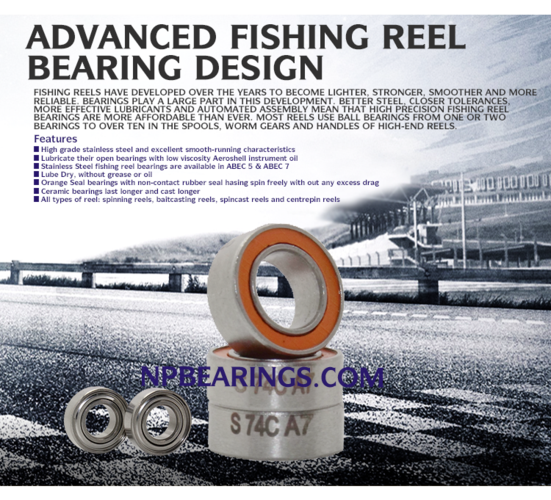Ultimate Guide to Sealed Waterproof Bearings for Boats: Benefits, Selection
Introduction
Sealed waterproof bearings for boats are critical components in marine engineering, ensuring smooth operation and longevity of vessel machinery. Designed to withstand harsh aquatic environments, these specialized bearings prevent water ingress, corrosion, and debris damage. This article explores their functionality, advantages, and best practices for selection, helping marine enthusiasts and professionals optimize their equipment’s performance.
What Are Sealed Waterproof Bearings?
 Sealed waterproof bearings for boats are precision-engineered components that reduce friction between moving parts in marine applications. They feature advanced sealing mechanisms—typically rubber or polymer shields—combined with waterproof grease to block moisture, salt, and contaminants. Unlike standard bearings, their robust design ensures reliability in submerged or high-humidity conditions, making them indispensable for propellers, rudder systems, and marine engines.
Sealed waterproof bearings for boats are precision-engineered components that reduce friction between moving parts in marine applications. They feature advanced sealing mechanisms—typically rubber or polymer shields—combined with waterproof grease to block moisture, salt, and contaminants. Unlike standard bearings, their robust design ensures reliability in submerged or high-humidity conditions, making them indispensable for propellers, rudder systems, and marine engines.
Key Benefits of Waterproof Bearings in Marine Applications
Sealed waterproof bearings extend equipment lifespan by minimizing wear from corrosion and abrasive particles. Their watertight seals reduce maintenance frequency, while specialized materials like stainless steel or ceramic enhance durability. These bearings also improve operational efficiency by maintaining consistent performance in turbulent waters, directly impacting fuel economy and safety.
Common Applications in Marine Systems
These bearings are vital in propulsion systems, steering mechanisms, and winches. They’re used in sailboat rigging, fishing vessel trawl gear, and offshore drilling equipment. High-performance variants support commercial shipping and luxury yachts, underscoring their versatility across marine sectors.
Types of Sealed Waterproof Bearings
Common types include deep groove ball bearings (for moderate loads), angular contact bearings (handling axial/radial forces), and spherical roller bearings (heavy-duty applications). Materials range from chrome steel for cost efficiency to titanium alloys for extreme corrosion resistance. Hybrid bearings with ceramic balls offer superior speed capacity.
How to Choose the Right Bearing for Your Boat
Consider load capacity, rotational speed, and environmental exposure. Saltwater compatibility demands stainless steel or coated bearings. Verify IP ratings—IP67 or higher ensures full waterproofing. Partner with suppliers offering customized solutions for unique marine requirements.
Linking Expertise to Your Needs
Our company specializes in premium sealed waterproof bearings for boats, rigorously tested for ISO 9001 compliance. Explore our catalog featuring corrosion-resistant designs, customizable dimensions, and expert technical support to safeguard your marine investments.
FAQs
1. How often should sealed bearings be replaced?
Inspect annually; typical lifespan is 3-5 years depending on usage intensity.
2. Can these bearings handle saltwater exposure?
Yes, when constructed with marine-grade stainless steel or protective coatings.
3. Are they compatible with high-speed engines?
Select hybrid ceramic bearings for RPM exceeding 10,000.
4. What lubrication is required?
Pre-lubricated with waterproof grease—no routine re-greasing needed.
5. Do you offer custom sizing?
Yes, tailored solutions available for unique marine machinery specifications.
Conclusion
Sealed waterproof bearings for boats are essential for reliable marine operations. By understanding their features and proper selection criteria, you can enhance vessel performance and reduce downtime. Visit our product page to explore industry-leading solutions engineered for durability and precision.




 13869596835
13869596835